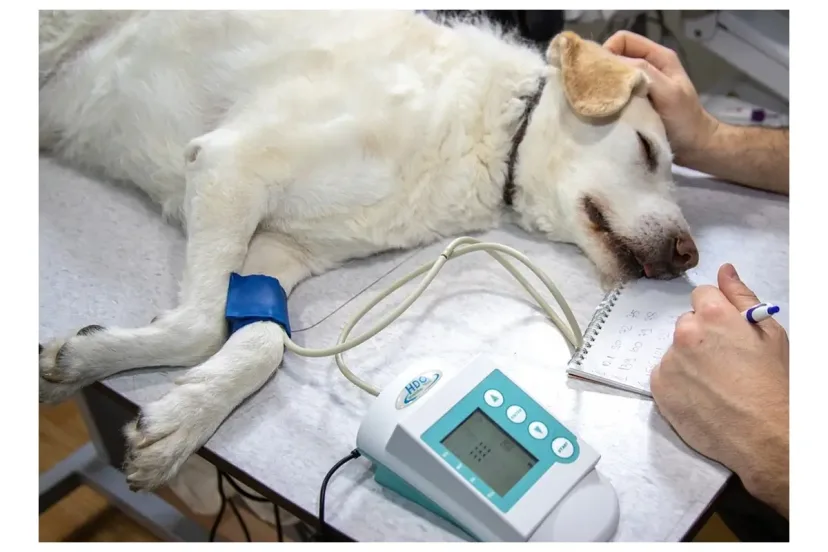Poisonous to Dogs: Common Hazards & Prevention
National Animal Poison Prevention Week is held each year, during the third week of March, to help raise awareness of the genuine danger of pet poisoning. It’s essential for dog parents to prioritize our furry friends’ safety from items poisonous to dogs lurking in their environment. During this observance, pet parents are encouraged to take proactive measures to pet-proof their environments effectively. Certain foods, plants, medications, and chemicals can be poisonous to dogs, potentially leading to severe consequences if ingested or even if come into contact with. It’s crucial to educate ourselves about these common hazards and take preventive steps to minimize the risks to our beloved pets.
About National Animal Poison Prevention Week
Every year, National Animal Poison Prevention Week coincides with National Poison Prevention Week, initially established by the National Safety Council in 1961. In response to a joint resolution passed by the 87th United States Congress on September 26, 1961, President John F. Kennedy proclaimed the third week of March as National Poison Prevention Week on February 7, 1962. This observance aimed to raise awareness about the dangers of accidental poisoning among American families.
Since its inception, National Poison Prevention Week has been dedicated to educating the public about preventing accidental poisonings, extending its focus to include safeguarding pets. Recognizing the importance of protecting our furry family members, the National Safety Council introduced National Animal Poison Prevention Week as a complementary initiative. This annual event serves as a reminder to dog parents to take proactive measures in safeguarding their pets from potential hazards in their environment, including everyday items that can be poisonous to dogs.
In support of National Animal Poison Prevention Week, we have compiled some critical information about what is poisonous to dogs, how to spot pet poisoning, and what to do if your dog shows signs of poisoning.
What is Poisonous to Dogs
Let’s delve into the four major categories of items that are poisonous to dogs, which are: food, plants, cleaning & household products, and medications. By familiarizing yourself with these categories and their associated hazards, you can take proactive steps to safeguard your dog’s well-being.
This compilation doesn’t encompass every potential item poisonous to dogs but highlights prevalent substances causing canine poisoning.
Food
We often extend our love by sharing our favorite foods with our furry companions, which makes understanding the hazards in our favorite foods crucial as they can be poisonous to dogs. Some human foods benefit dogs while others can cause serious health issues. Common human food poisonous to dogs include:
- Chocolate
- Coffee, Tea and Caffeine
- Onions and Garlic
- Alcohol
- Sugary and Salty Foods
Our article:
Toxic Food for Dogs: Essential Guide for Responsible Dog Parents provides more information.
Plants
When landscaping or decorating our homes, it’s crucial to be aware of plants poisonous to dogs. While many plants beautify our surroundings, some can harm our furry companions. These toxic plants include popular species like aloe, azaleas, and palm plants, which can cause symptoms ranging from mild gastrointestinal upset to severe poisoning. Dog parents should thoroughly research plants before introducing them into their homes or gardens to ensure the safety of their canine friends. We recommend you consult the ASPCA Toxic and Non-Toxic Plants List.
When it comes to plants poisonous to dogs, dog parents must be vigilant. Some seemingly harmless plants can be toxic.
Read to our article: Plants Toxic to Dogs: Hidden Dangers Revealed for additional information.
Cleaning & Household Products
Cleaning and household products can harbor toxins that are harmful to dogs if ingested or exposed to their skin or eyes. From bleach to window cleaners to batteries, these substances contain chemicals that can cause gastrointestinal issues, skin irritation, or even poisoning in dogs. It’s crucial for dog parents to store these products securely in cabinets or closets inaccessible to dogs to prevent accidental ingestion or contact.
Click here for our blog post:
Common Household Items Toxic to Dogs: Your Essential Guide
Medications
Human medications, whether over-the-counter or prescription, can pose serious risks to dogs, leading to various adverse reactions. It’s vital to store all medications securely in cabinets or drawers to prevent accidental ingestion by pets.
How to Spot Pet Poisoning
Pet poisoning and symptoms vary based on age, size, breed, and the type of poison and how much of it they have consumed or that your dog has come into contact with. These factors lead to diverse reactions in dogs. Additionally, dog poisoning symptoms can develop very quickly or be delayed by several hours, making it difficult to know if poisoning occurred. Symptoms can escalate whether unnoticed or untreated.
Common pet poisoning symptoms that pet parents need to be aware of include the following:
- Appetite loss
- Increased heart rate
- Breathing Issues
- Diarrhea
- Vomiting or gagging
- Pale gums
- Excessive salivation
- Coughing up blood
- Urination/Peeing problems
- Excessive thirst
- Confusion
- Lethargy, Collapse, Lack of Coordination
- Tarry or black stools
- Fatigue
- Tremors or Seizures
- Change in your dog’s personality or erratic behavior
What to do if your dog shows signs of poisoning
- Remain calm.
- Quickly separate your pet from the poisonous substance. Remove it from their reach or the area of the spill. Prevent additional or further contact.
- Note down the suspected poisonous substance. Bring it along if safe, avoiding risks to yourself and others during transport.
- If your dog is stable call your Vet, as they know your pet best. If they are not available contact:
The Pet Poison Helpline is available 24/7 by calling (855) 764-7661.
You can also call the ASPCA Animal Poison Control Center at 1-888-426-4435 for guidance. - If your pet appears unstable, head to the nearest vet hospital or emergency room. Signs requiring immediate vet attention include:
- Collapsing
- pale gums
- staggering
- seizures
- breathing issues
When transporting a sick dog consider these tips:
- Lay collapsed pets gently in the car, make sure that they can breathe easily by extending their neck
- Allow vomiting but clear it promptly.
- Travel with another person if possible, for pet care and driving safety.
- Bring toxic substances safely if feasible, avoiding risks.
Is inducing vomiting safe?
Generally, no. Inducing vomiting can pose risks. It’s crucial to refrain from doing so unless directed by a veterinarian. Attempting it at home can be risky and could cause more harm. Your vet’s guidance ensures safety.
Conclusion
National Animal Poison Prevention Week, observed for the third week of March, highlights the risks of substances poisonous to dogs. Dog parents must remain vigilant, educating themselves on potential hazards and taking proactive steps to safeguard their pets. Awareness of what can be poisonous to dogs is essential because they can include our favorite foods, common plants, cleaning & household products, and medications. Spotting pet poisoning symptoms, such as appetite loss or seizures, requires quick action and contacting a vet or poison helpline. Transporting a sick dog safely involves laying them gently in the car, allowing vomiting if necessary, and traveling with another person for safety. Inducing vomiting at home is generally unsafe and should only be done under veterinary guidance for the safety of your pet.
Emergencies are undeniably tense, but being prepared can alleviate stress and improve outcomes. Ultimately, National Animal Poison Prevention Week aims to build awareness of what can be poisonous to dogs and empower pet parents to take proactive steps instead of reacting after the fact. Swift action is crucial in pet poisonings, emphasizing the importance of prevention for their welfare.
FAQs:
Q1.: What items are commonly poisonous to dogs?
A: Commonly poisonous items to dogs include certain foods (like chocolate and onions), plants (such as aloe and azaleas), cleaning products, and medications.
Q2.: How can I prevent my dog from being poisoned?
A: Pet-proof your environment by keeping toxic items out of reach, familiarize yourself with potential hazards, and promptly clean up spills.
Q3.: What should I do if my dog shows signs of poisoning?
A: Remain calm, remove your pet from the poisonous substance, note down what they ingested, and contact your vet or a poison helpline immediately.
Q4.: Is inducing vomiting safe if my dog is poisoned?
A: Generally, no. Attempting to induce vomiting at home can be risky and should only be done under veterinary guidance.
Q5.: What steps should I take when transporting a sick dog?
A: Lay them gently in the car, allow vomiting if necessary, travel with another person for safety, and bring along any toxic substances safely.




